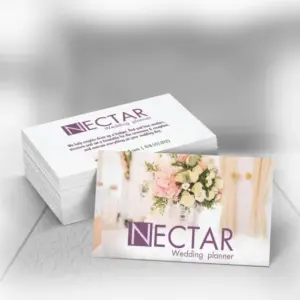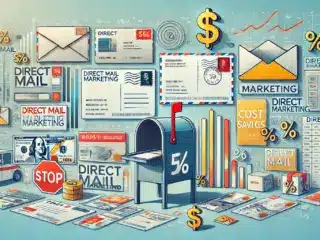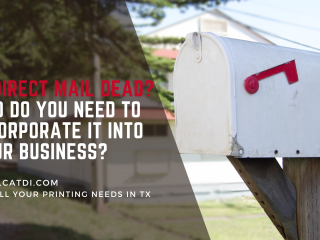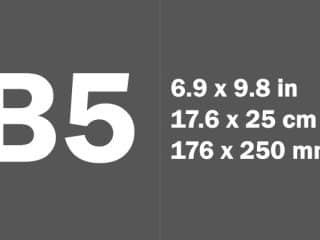Print media advertising is a form of mass communication strategy that uses hard copy printed mediums like newspapers, direct mail, banners, billboards, and magazines to reach consumers. The advertising industry identifies print media as one of the oldest mediums used to promote products.
By advertising print services and brands, businesses target to attract and influence consumer buying habits. More so, marketers use print media advertising to reach out to prospects, existing customers, businesses, and the general public.
What Exactly Is Print Media?
In a world where screens dominate every waking moment, print media advertising remains a powerful and trusted way to cut through the digital noise. Whether it’s a beautifully designed brochure, a bold magazine ad, or a direct mail campaign, print materials have a unique way of:
- Capturing attention in a visually overstimulated world
- Building credibility and trust with physical, professional designs
- Driving stronger engagement, often outperforming digital in response rates
According to recent industry data, print media advertising, particularly direct mail, consistently outperforms digital channels like email in response rates:
- Direct mail averages a 4.4% response rate, while email lags behind at just 0.12% (Amra & Elma). That’s over 36 times higher.
- Campaigns using house lists can achieve response rates up to 9%, while prospect lists average around 4.9% (Birdseye Post).
- The Data & Marketing Association reports that direct mail response rates are 5 to 9 times higher than any other advertising channel, including email.
These figures make one thing clear, print media advertising doesn’t just compete—it consistently delivers stronger engagement and results.
These tactile marketing tools prove that print media advertising still packs a punch in 2025—offering brands a tangible way to stand out and stay memorable.
But what exactly is print media, and why does it still matter today?
Print media is a written or pictorial form of mass communication. It is mechanically or electronically generated through methods like impression or photocopying. Modern printers can now produce these communications using automated digital technology, streamlining the creation of vibrant, high-quality materials.
At its core, print media involves the creation and distribution of news, advertising, or educational content through tangible publications—what we often call “hard copies.” These physical formats—such as newspapers, magazines, brochures, pamphlets, posters, and books—allow for a tactile experience that digital channels simply can’t replicate.
One of the standout advantages of print media lies in its ability to capture and reproduce visuals with remarkable precision. Whether in vivid color or crisp black and white, printed images command attention and leave a lasting impression.
Just as importantly, printed materials encourage a deeper, more personal level of interaction. Readers can:
- Feel the texture of the paper
- Flip through pages at their own pace
- Highlight, annotate, or clip sections for future reference
This sensory experience supports stronger recall and comprehension, making print a particularly effective medium for delivering important messages.
Even as digital media continues to evolve, the availability and impact of print remains undeniable. By combining visual appeal with a physical presence, print media continues to engage a broad range of audiences—ensuring that your message is not just seen, but felt.
Examples of Print Media



It is typical for printers to display print media on paper. However, printing firms may also use various substrates such as canvas, fabric, vinyl, and more. The majority of readers, advertisers, and other media users are familiar with the following examples of print media.
Newspapers and Weeklies
Newspapers are good examples of print media where advertisers have a wide variety of options available. The various types of newspapers include weekly, local, regional, evening, or Sunday editions.
Who are the top consumers of newspapers? This print media attracts a wide range of readers. They include individuals with different interests such as sports, business, entertainment, fashion, politics, local and international news.
Furthermore, newspapers sell space to advertisers who need help displaying ads in text, graphics, photographs, and other illustrations. Some advertising agencies spend a fortune to buy double-page spreads, while others pay smaller amounts for classified ads that contain text only.
Magazines
There are various types of magazines advertisers can use for publicizing services and brands. Trade magazines promote specific industries such as electronics, manufacturing finance, and more. Consumer magazines publicize numerous interests, including fashion, health, sport, hobbies, and current affairs.
Other magazines focus on publications for managers and careers such as marketing professionals, engineers, human resource executives, and more.
A majority of magazines are published weekly, monthly or quarterly. Even so, advertisers can still buy space to place adverts either in black and white or color.
Billboards
Billboards and posters are types of print media that allow promoters to reach consumers on the go. They are are typically large prints and graphics and are placed on the outdoors. Placing these banners in strategic positions such as near malls helps advertisers influence consumers close to the selling counters.
Advertising agents place billboards in public places such as airports and train stations to reach larger groups of patrons. The size of these gigantic boards makes it almost impossible for anyone to miss the advert.
Furthermore, promoters can combine digital and print to alter messages, slogans, or pictures on billboards at their set times.
Is Print Media Still Effective in 2025?
News, fashion, manufacturing, and other industries still rely on traditional print media advertising, even as digital platforms continue to dominate marketing budgets. While there has been a modest decline in overall print ad spend, this medium is far from obsolete—in fact, it’s experiencing a strategic comeback.
Promoters continue to embrace print media advertising for its tangible value, longevity, and ability to drive deeper brand engagement. Unlike digital ads that vanish with a scroll or click, a well-designed brochure or flyer can linger in a customer’s hands, office, or kitchen counter—revisited multiple times. This stickiness gives print a unique edge: staying power.
As discussed in Catdi’s detailed overview of print media advertising, print continues to shape buyer behavior. But in 2025, the conversation has evolved—print isn’t just surviving; it’s innovating.
2025 Trends Reinventing Print Media Advertising
One of the key drivers of print’s comeback is variable data printing, which enables personalization at scale. Businesses can now deliver tailored messaging—by name, location, or preference—making print feel more relevant and valuable to consumers.
Another game-changer is eco-conscious branding. Sustainability is no longer a differentiator—it’s a baseline expectation. Many brands are switching to recycled paper, soy-based inks, and carbon-neutral printing processes, aligning their values with today’s environmentally aware audiences (MBA Group, EssenceMediaCom).
Direct Mail: A Trustworthy Channel in an Oversaturated World
Direct mail is enjoying a resurgence as audiences experience digital fatigue. With inboxes overflowing and social feeds jam-packed, something as simple as a postcard now feels refreshingly personal. Recent data shows that direct mail now commands a 9% average response rate, far exceeding the 1% (or less) seen in many digital formats (Passive Secrets).
Latest Innovation in Print Advertising
Tools like QR codes, near-field communication (NFC), and augmented reality (AR) are transforming static materials into interactive, trackable marketing assets that seamlessly guide consumers from paper to pixel. This shift reflects a broader evolution in marketing strategies where print is no longer a standalone tool, but a powerful amplifier when integrated with digital experiences.
Print Advertising is Still Booming in 2025
Retailers are recognizing this shift. While earlier studies noted that 68% of retail stores favored print for its trust and reach, modern insights show that combining print with digital strategies can boost campaign effectiveness by up to 400%. This figure has been confirmed across multiple industry reports and marketing publications, highlighting the dramatic lift in reach, engagement, and conversions when both channels are used together (SoCal News Group, McClatchy, Spartan Marketing)
What’s more, the global print advertising market is projected to grow from $348.31 billion in 2024 to $359.53 billion by the end of 2025 (TBR Blog)., with steady growth expected into the next decade. This growth isn’t just in legacy formats like newspapers and magazines—it’s also in innovative uses like personalized direct mail, smart packaging, and loyalty-focused print campaigns that integrate with CRM and digital tracking systems.
Not Just Print—Smart Print
Modern print media advertising is about more than putting ink on paper. It’s about building memorable experiences through:
- Interactive packaging
- Personalized loyalty mailers
- Print-to-digital hybrid campaigns
- Direct mail that integrates with CRMs and analytics tools
Print today is measurable, strategic, and digitally integrated—a far cry from the static formats of the past.
The Bottom Line
Is print dead? Not even close.
The better question is: How are you using print media advertising in 2025?
The most successful brands don’t see print and digital as competitors—they use them together, strategically, to increase trust, boost conversions, and meet customers where they are (offline and online). Whether it’s a QR-driven postcard or an eco-friendly flyer that doubles as a digital coupon, print is once again at the center of the marketing conversation.

Ready to leverage print media for your next campaign?
Get Catdi’s custom solutions here →
Print Versus Electronic Media – 7 Differences
- Print media is the older channel of mass communication as compared to the electronic version, which is current and more advanced.
- It results through publications, while electronic media produces via a computerized medium.
- The traditional media requires the reader to be literate to read the information. However, literacy is not a priority to go through electronic media because consumers can watch the video or listen to the audio version.
- Readers pay more for print media than for electronic media subscriptions. With print media, you only buy what you need when you need it. You can also refer to your print at a later time. Electronic subscriptions expire after a specific duration, and you need to renew even when you may only read it once.
- It is easy to fully pay more attention to a print article than to an electronic medium. Reading an online publication can be distracted by live chat pop-ups, social account messages, or even power outages.
- Print media is not instant or available 24/7. For example, printers produce newspapers daily, weekly, or monthly. However, electronic media is readily available “live.” You can receive news or commercial updates as they happen through your smartphone, television, or news channel.
- Unlike electronic media that offer large to limitless space, newspapers, magazines, billboards, and other print mediums have a limited area of coverage.
Which Print Media Is Best for Advertising?
You can decide which print media is best for promoting your brand depending on your target audience and your advertising budget. Even so, newspapers and brochures are the most preferred channels of print media. More so, these print mediums have a high rate of consumer confidence.
Newspaper
This print media is considered one of the best mediums of print advertising. Furthermore, newspaper ads are the oldest campaign tools recorded in the history of the industry. In 1704, Boston News-Letter published a newspaper advertisement selling real estate on Oyster Bay Long Island.
Since then, advertisers have continued to use print media to promote brands and services globally. More so, print is favored across all generations by the seniors and millennials.
For example, a report by NielsenIQ shows that in the U.S, 71% of those aged 18-24 have subscribed to electronic newspaper content. However, 65% of those aged 35 and above in the same demographic read print newspapers from Sunday to Monday.
Regardless of the statistics, this type of print media is the oldest medium for advertising. The newspapers have been a means of advertising for over a century. Businesses find daily journals less costly when compared to other alternatives like billboards, magazines, and postcards.
Brochures
Some promoters prefer to use brochures as the best print media for advertising. Besides the simplicity in design, brochures are informative and tell your customers about your brand or services.
Printing brochures is less costly than other print media like magazines. More so, they cost nothing to disseminate. This print media is the best reminder you can give to your customers after a meeting.
Brochures continue to influence your prospects long after physical contact. Some clients find it faster to read print media than it is to visit a website.
Direct Mail
Direct mail stands out as an effective and enduring tool within the realm of print media advertising. By allowing businesses to send physical marketing materials directly to the homes or offices of targeted individuals, direct mail offers a tangible touchpoint that digital channels cannot replicate.
This form of advertising capitalizes on the personal connection and the tactile experience of receiving and interacting with a physical item. When executed with strategic precision, direct mail can yield impressive response rates and return on investment, especially when the messaging is tailored to the interests and needs of the recipient.
Advancements in printing technologies such as digital printing and data analytics have enhanced the capability of direct mail campaigns to be both creatively captivating and highly personalized, further solidifying its place as a powerful component of any comprehensive marketing strategy.
Benefits of Print Media
Before stepping out to source for the best print media, promoters and businesses must scrutinize the advantages and disadvantages of using this medium.
Listed below are some of the benefits to consider when deciding on this medium for your advertising campaign.
Print Ads Create Credibility and Build Trust
According to research, the older generation of the U.S population has confidence in printed ads. They consider handheld advertisements more credible than their electronic counterparts. More so, millennials also trust print media even though they frequently interact with digital advertising.
Consumer and market research indicates that 60% of interviewed respondents showed confidence in newspapers while 58% preferred magazines. Consumers trust print media more than electronic media because the internet contains high levels of misleading information.
The public tends to believe that print media originates from a reputable source or company. More so, effective flyer print marketing can help drive traffic to your website to create conversions and brand awareness.
Findings from Nielson IQ indicate that the top 5 most trusted mediums by the public include TV ads, newspaper ads, magazine ads, billboards, and radio ads.
High Conversion Rates
As indicated in a report by the Chief Marketing Officer (CMO) council, about 80% of consumers respond to direct mail ads. This rate is higher than that of shoppers who react to email ads.
The high response rate experienced in direct mail is why print marketing is more costly than digital marketing. Other print media types such as banners, newspaper ads, brochures, and business cards trigger the same consumer response as direct mail.
Print Helps You Reach Your Ideal Audience
Marketers know that placing ads in print media such as magazines, newspapers, and brochures can help reach your target market or the general public.
Promoters take advantage of the population tally to strategically place adverts in the right place in front of the ideal audience.
Take the example of a physical fitness service provider. A marketer will reach out to sportspeople and individuals who need to stay physically fit by placing an advert on the sports page.
Flexibility
It is the best advertising medium to use when you need to target a specific audience. Print media allows you to choose which section of magazine or newspaper your intended group is likely to read.
This channel of mass communication is not only strategic. But have digital copies, which give marketers more opportunity to reach a wider audience.
Establishes Your Brand
You can reach your target audience by promoting your brand in print media such as magazines, publications, newspapers, and brochures. Printed substrates allow marketers to bring the aesthetic attributes of color, font, texture, and images that help form brand recognition.
Durability
Magazines, brochures, publications, and other print mediums are tangible or hard copy. These items last longer in workplaces and residences, unlike the electronic versions that readers can delete, ignore, or skip with ease.
Readers are likely to keep magazines for a long time and possibly revisit ads more than once or twice.
Substantial Attention Span
Reading from a mobile phone screen is often distracted by pop-up messages or incoming calls. However, consumers consider magazines and newspapers a better medium to read ads because one can focus without being distracted by notifications.
Disadvantages of Print Media
Pay for Your Target Market
High-caliber magazines feature glossy covers, top-notch writers, seasoned photographers, and standout design—all of which come at a price. Advertisers pay premium rates for this level of professionalism and production quality. For example, the average cost to reach 1,000 people with print is over $22, compared to just $3–$10 for digital ads. This makes print a costly option, especially for small businesses with limited marketing budgets. However, the investment ensures your message reaches a more refined and targeted audience.
Timing and Flexibility
Print advertising is inherently slower than digital. Campaigns must be planned well in advance, with content finalized weeks—or even months—before it ever reaches the public. Once an ad goes to print, there’s no opportunity to make edits, respond to current events, or adjust based on feedback. In contrast, digital campaigns can be launched, tested, paused, and optimized in real time. For businesses needing to pivot quickly, print lacks the flexibility today’s fast-paced market often demands.
Decreased Popularity and Reach
The shift toward digital communication continues to accelerate, with more consumers subscribing to email newsletters, mobile updates, and social feeds for instant information. Digital content is also far more shareable, expanding its reach organically through social platforms. As a result, print media is experiencing a decline in popularity, especially among younger, tech-savvy consumers.
That said, print still holds value for specific demographics—particularly older generations such as Baby Boomers, who continue to trust and engage with physical publications. This makes print useful for brands catering to that audience, though overall, it’s becoming harder to reach large-scale audiences through print alone.
Limited Placement Control
Unlike digital platforms, where ads can be precisely placed by behavior, location, and demographic data, print offers far less control over placement. An ad may appear in a section of a publication that doesn’t resonate with the reader, reducing its effectiveness.
Measurement Challenges
One of the biggest drawbacks of print is tracking. While QR codes and unique promo codes have helped bridge the gap, print still lacks the advanced analytics that digital marketing offers—such as click-through rates, conversion tracking, and user behavior insights. This makes it harder to gauge ROI and refine future campaigns.
Risk of Human Error
In the digital space, a typo can be quickly corrected. In print, a single error—whether it’s a misspelled word, incorrect phone number, or layout flaw—can become a costly mistake once distributed. There’s no backspace button after the presses roll.
Creative Limitations
Though print offers a unique tactile experience, color reproduction and design capabilities can be limited. Certain effects—like animations, dynamic content, or precise brand color matching—are easier to achieve in digital environments. This can restrict creativity for brands that rely heavily on strong visual identity.
A Balanced Perspective
Despite these disadvantages, print media is far from obsolete. It offers tangible benefits like credibility, longevity, and physical presence—qualities that digital ads sometimes lack. In 2025, the most effective marketers are those who balance the reach and agility of digital with the trust and impact of print, aligning each medium with the right audience and message.
Conclusion
Print media advertising is the oldest means of marketing that businesses have used to promote their brands. Newspaper ads date back to 1708 and are still here today, but better, bolder, colorful, and on point. Today, with state-of-the-art technology, the print industry is more advanced and vibrant.
More so, printers print media ads on a variety of substrates such as photo paper, fabric, canvas, vinyl, and more. Today, advertisers display adverts on numerous mediums such as billboards, flyers, brochures, business cards, postcards, door hangers, letterheads, envelopes, wrappers, and more.
Print media influences consumer habits in more ways than compared to electronic media. Finally, print is still the best way to grow your brand awareness. And you can trust that by advertising through this industry, your brand or service can move to the next level.














